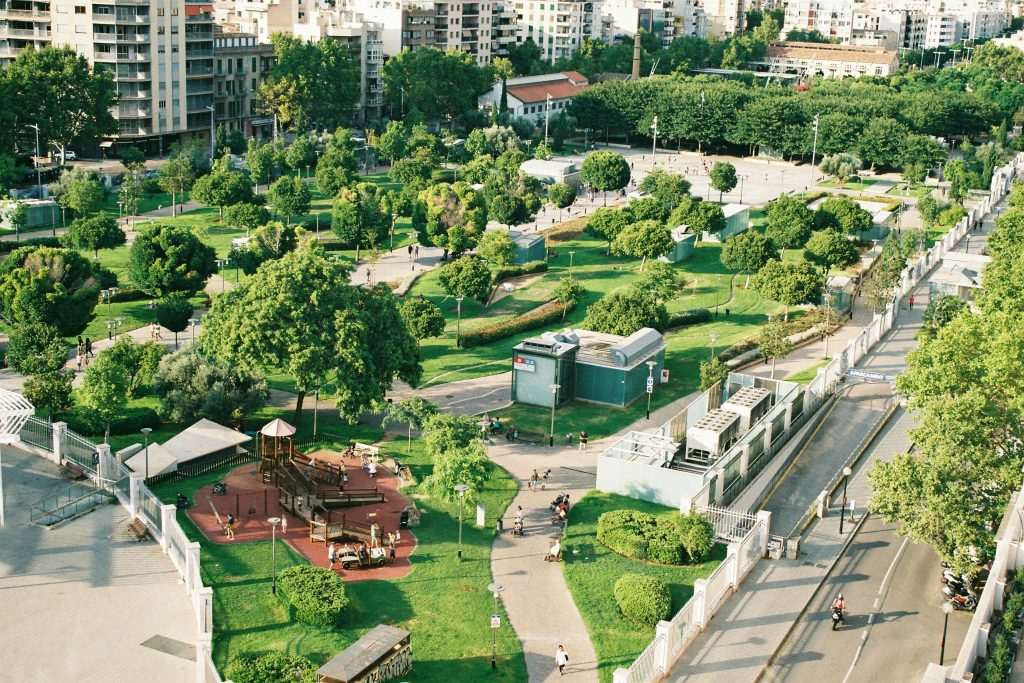Cities today face a dual challenge: meeting ambitious sustainability targets while ensuring the reliable operation of critical infrastructure. From government office towers to zero-carbon demonstration sites and centralised monitoring centres, the demand for smarter, more resilient systems has never been greater.
Traditional building management systems (BMS) are limited to single assets and reactive monitoring. In contrast, digital twins unify building and city data into a living, visual model. With Neuron’s Building Digital Twin, governments and developers can monitor, predict, and optimise the performance of complex assets across entire portfolios.
For a full overview of how digital twins work, see our Digital Twin Overview.

Why Public Infrastructure Needs Digital Twins
Unlike private commercial assets, public buildings and city-wide facilities are subject to higher scrutiny, broader sustainability requirements, and greater operational complexity. They must:
Optimise energy efficiency across diverse facilities.
Support ESG and net-zero goals with transparent data.
Scale across hundreds of assets while ensuring standardisation.
Enable predictive maintenance to avoid service disruptions.
Provide resilience in emergencies, from climate events to system failures.
A digital twin for government and city-scale infrastructure provides the unifying platform to achieve these goals: making invisible performance issues visible, and turning fragmented data into actionable insights.
Driving Zero-Carbon Goals
The Construction Industry Council (CIC)’s Zero Carbon Park in Hong Kong demonstrates how digital twins support carbon-neutral initiatives. Opened in 2012 as a pioneering showcase of sustainable building technologies, the site integrates photovoltaic panels and biodiesel tri-generation to offset its annual energy use.
Neuron provided a central monitoring dashboard platform that unified data from BMS, IoT sensors, CCTV, and facility management systems. Key features included:
Digital twins across eight CIC buildings to visualise performance in real time.
Preventive maintenance through fault detection and alerts.
Analytics dashboards for emissions tracking and system optimisation.
By uniting data into a single interactive platform, the project proved how digital twins can move beyond individual efficiency gains to support zero-carbon city-scale strategies.
Read the full case study: Zero Carbon Park
Scaling Digitalisation Across a City
The Hong Kong Government’s Regional Digitisation Control Centre (RDCC) illustrates how digital twins scale from individual buildings to entire portfolios.
Launched in 2020, the RDCC consolidates data from over 400 government buildings into one unified platform built on Neuron’s architecture. Capabilities include:
City-wide GIS monitoring for real-time situational awareness.
Performance benchmarking across facilities to improve environmental performance
AI-powered analytics to quantify any potential of enhancing asset efficiency.
Emergency response functions for resilience and safety.
The result is a central digital system for government infrastructure, capable of monitoring thousands of IoT devices and enabling proactive decision-making.
Read the full case study: Regional Digitisation Control Centre

Modernising Critical Public Assets
Digital twins are not limited to landmark projects or mega-developments. They are equally valuable in modernising day-to-day public assets. The Drainage Services Department (DSD) headquarters in Hong Kong is a prime example.
Neuron delivered an Integrated Building Digitalisation Platform for the 21-storey government tower, enabling:
3D Digital Twin with BIM integration.
AI/Machine Learning chiller plant optimisation for significant energy efficiency.
Fault detection and predictive maintenance to minimise downtime.
Open API integration to future-proof the building for automation.
This demonstrates how a digital twin can modernise critical public assets, ensuring operational resilience while supporting sustainability goals.
Read the full case study: Drainage Services Department
Why Neuron is a Trusted Partner for City-Scale Digitalisation
Together, these projects — Zero Carbon Park, the Regional Digitisation Control Centre, and the Drainage Services Department Headquarters — showcase how Neuron’s Building Digital Twin supports:
Net-zero ambitions with integrated carbon tracking and renewable optimisation.
Portfolio-wide scalability to unify hundreds of government facilities.
Predictive maintenance and fault detection that reduce costs and prevent service disruption.
Trusted partnerships with public authorities and leading developers, positioning Neuron as a reliable partner for city-scale digitalisation.
In an era where cities must balance sustainability with resilience, digital twins emerge as a transformative force for public infrastructure. By unifying fragmented data into real-time, actionable insights, they empower governments to optimize energy use, predict maintenance needs, and drive zero-carbon strategies at scale—from individual buildings to entire portfolios. As cities worldwide accelerate their digital transformation, Neuron stands ready to deliver intelligent, future-proof systems that ensure smarter, greener, and more resilient infrastructure for generations to come.
Frequently Asked Questions
What is a digital twin for public infrastructure?
It is a virtual model of government or city-owned assets that integrates live data from building systems, IoT devices, and AI analytics. Neuron’s digital twin provides real-time monitoring, predictive maintenance, and carbon tracking across entire portfolios.
How does a digital twin help governments achieve sustainability targets?
By unifying data from energy, HVAC, and renewable systems, a digital twin can track emissions, optimise energy use, and provide transparent ESG reporting — critical for net-zero and carbon-neutral goals.
Can a digital twin scale across multiple government buildings?
Yes. The Regional Digitisation Control Centre integrates more than 400 buildings into one platform, demonstrating Neuron’s scalability for city-scale digitalisation.
What role does AI play in Neuron’s platform?
AI powers chiller optimisation, predictive fault detection, and scenario modelling. At the Drainage Services Department HQ, AI/ML optimisation significantly improved energy efficiency and operational reliability.
Why is Neuron considered a trusted partner for government projects?
Neuron has successfully delivered digital twin solutions for leading public authorities, including the Construction Industry Council, EMSD, and DSD. These partnerships demonstrate reliability, scalability, and expertise in delivering city-wide solutions.